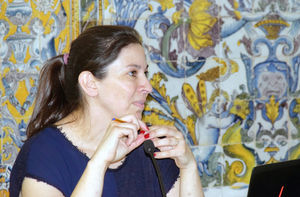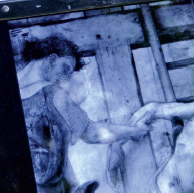
Doutoramento em Ciências Veterinárias
Development of a large animal model for percutaneous vertebroplasty and in vivo evaluation of a new injectable cement
Maria Teresa Carvalho Oliveira

Orientação: Joana Margarida Ferreira da Costa Reis & José Alberto Caeiro Potes
The present work aimed to test in vivo a new biomaterial for vertebral augmentation.
Vertebral compression fractures not healing with conservative management are treated through minimally invasive surgical techniques. Presently, most of the cements used in percutaneous bone interventions are based on a polymeric non resorbable matrix. However, they can present some complications. Calcium sulphate-based cements are effective bone substitutes. Disadvantages include their limited shear and compressive strength.
To go beyond the state of art, a new bioactive calcium sulphate-based cement was developed – Spine-Ghost. To test the suitability of the injectable cement for percutaneous vertebroplasty (PVP), a pre-clinical study was mandatory.
A new large animal model for PVP was developed in sheep. In the ex vivo model, bone defects were created in the cranial hemivertebrae through a bilateral modified parapedicular approach and mechanical tests performed. The ex vivo model is reproducible, and safe under physiological loads.
In the in vivo study, two groups of Merino sheep were defined (n=8): a) the control group injected with a commercial ceramic cement; and b) the experimental group injected with Spine-Ghost. Of the first interventioned animals, two presented cardiorespiratory distress during the cement injection, and one had mild neurologic deficits in the hindlimbs. All sheep survived and completed the 6-month implantation period.
After sacrifice, the samples were assessed by micro-CT, histological, histomorphometric, and immunohistological studies. There was no evidence of cement leakage into the vertebral foramen. No signs of infection or inflammation were observed. Most importantly, there was cement resorption and new trabecular bone formation in the bone defects of all sheep.
The model of PVP is considered suitable for preclinical in vivo studies, mimicking clinical application.
Spine-Ghost proved to be an adequate material for percutaneous vertebroplasty, with a biological response identical, if not superior, to the one elicited by the available commercial control.




